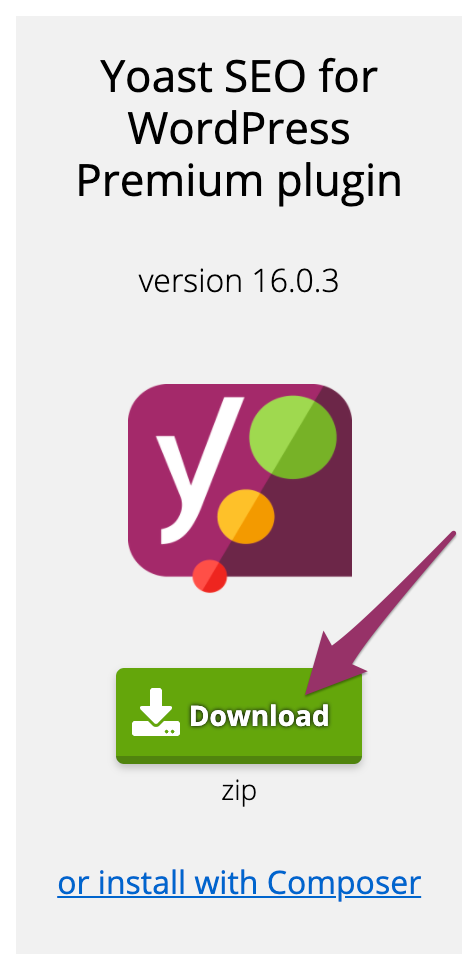Creating custom WordPress page templates makes it easy for you to take control of your website's appearance and design freedom. Doing so will not only give your website a unique look, but will also save you a lot of time in the development process. The good news is that there are multiple ways to create these templates to choose from. You can create the templates yourself and upload them to your website, or you can utilize a convenient page builder plugin for quick implementation.
![Image[1] - How to Easily Build & Customize Exclusive WordPress Page Templates - Photon Fluctuation Network | Professional WordPress Repair Service, Global Reach, Fast Response](http://gqxi.cn/wp-content/uploads/2024/05/2024053101500710.png)
Manual creation of page templates
If one already has an understanding of how to build WordPress themes, then manually creating page templates may be more suitable. While this method requires some basic coding knowledge, it can provide great flexibility and freedom for custom template design. By creating them manually, you can customize the template to suit your needs and give your website more personality.
Attention:In this tutorial, we will guide you on how to create and upload custom page template files to your WordPress theme. To ensure that changes are not lost when the theme is updated, we recommend creating a child theme first. Doing so ensures that when the parent theme undergoes an update, the customization changes are still retained.
Step 1: Create a template file
Open a text editor of your choice and add the following line of code:
<?php /* 模板名稱:CustomPage */ ?>Feel free to name your template file, but choosing an easily recognizable name will make it easier to manage subsequently.
For example, if you want to design a template for a specific type of blog post (e.g., a how-to guide), you can give it a name such as "tutorial.php". If you want to create a page template that does not display the theme sidebar, you can name it "nosidebar.php".
Once you have finished writing the code, save the file as.phpA file in a format such as "custompage.php".take note ofThe extension of the template file must be.phpThe
Step 2: Upload template files to the website
Next, this template file needs to be uploaded to your website. To do this, you can use an FTP (File Transfer Protocol) tool, such as the popular FileZilla, to accomplish the upload.
Navigate towp-content/themes/folder and open the child theme folder:
![Image [2] - How to Easily Build & Customize Exclusive WordPress Page Templates - Photon Fluctuation Network | Professional WordPress Repair Service, Global Reach, Fast Response](http://gqxi.cn/wp-content/uploads/2024/05/2024053103210742.jpg)
Next, upload the newly created template file to your WordPress theme folder. Once the upload is complete, this template should be ready to use on your website.
To confirm this, log in to the WordPress admin and create a new page (or edit an existing one). In the sidebar of the edited page or in the Page Properties area, find "Page Properties" or "templates" option and click on it to see the list of available templates. You should be able to see the template you just uploaded in it.
![Image [3] - How to Easily Build & Customize Exclusive WordPress Page Templates - Photon Fluctuation Network | Professional WordPress Repair Service, Global Reach, Fast Response](http://gqxi.cn/wp-content/uploads/2024/05/2024053101403551.png)
Will find your new template in the list of templates. However, if you set it as a page template now and preview it, you may see a blank page.
This is because the template file doesn't contain any content right now. Next, we'll show you how to edit and customize this template.
Step 3: Customize the template file
First, you need to connect to your web server and then locate the theme folder that is currently being used. Next, in this folder find the folder namedpage.phpfile and open it with a text editor.
After that, it is necessary to start from thepage.phpfile to copy the key code snippets that will serve as the basis for the custom page template.
![Image [4] - How to Easily Build & Customize Exclusive WordPress Page Templates - Photon Fluctuation Network | Professional WordPress Repair Service, Global Reach, Fast Response](http://gqxi.cn/wp-content/uploads/2024/05/2024053101525211.jpg)
After copying the required codes, open the created custom page template file and paste these codes below this line below:
<?php /* 模板名稱:CustomPage */ ?>You should now have this line of code at the top of your template file to specify the template name, followed by what you just copied and pasted. This way, you have the basic structure of your template file.
![Image [5] - How to Easily Build & Customize Exclusive WordPress Page Templates - Photon Fluctuation Network | Professional WordPress Repair Service, Global Reach, Fast Response](http://gqxi.cn/wp-content/uploads/2024/05/2024053101533011.jpg)
The custom page template file can now be edited. For example, if you want to remove the footer from the template, you can delete the following line:
<?php get_footer(); ?>In addition, custom PHP code can be added to make the template more in line with your personal preferences and needs. Remember to save the file when you are done editing.
Back in the WordPress admin backend, if you've already applied this template to a post or page, you should now be able to see the changes made take effect by clicking Preview.
Link to this article:http://gqxi.cn/en/10834The article is copyrighted and must be reproduced with attribution.

























![Emoji[jingya]-Photonflux.com | Professional WordPress repair service, worldwide, rapid response](http://gqxi.cn/wp-content/themes/zibll/img/smilies/jingya.gif)






No comments